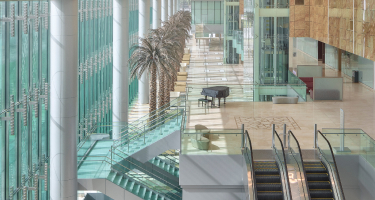Our Doctors
Meet all the doctors from Cleveland Clinic Abu Dhabi.
View Doctors

Acne is one of the most common skin conditions that people experience. Almost everyone has some degree of acne, but it mainly affects teenagers who are undergoing hormonal changes. Acne might be mild (blackheads, whiteheads, and occasional pimples), moderate (inflammatory papules), or severe (nodules and cysts). Scarring can occur. Treatment depends on how severe the condition is.
Acne lesions include comedones (whiteheads, blackheads), papules and pustules (small bumps, often with scarring), nodules, and cysts, often followed by scarring.
Acne has four main causes: male hormones, inflammation (swelling), bacterial build-up, and blocked pores. Commonly, acne that is driven by hormones becomes active during the teenage years. Sensitivity to such hormones — combined with surface (skin) bacteria and lipids (fatty acids) within sebaceous (oil) glands — produces acne. Common sites for acne are the face, chest, shoulders, and back—the sites of oil glands.
Although acne is essentially a normal physiologic (biological) occurrence, certain conditions might make the disease worse, including the following:
Only three medicines have proven to be effective for the treatment of acne: benzoyl peroxide, retinoids, and antibiotics. Most patients require at least one or two agents, depending on how severe the disease is.
The oral retinoid isotretinoin (Roaccutane®) is reserved for those patients with severe (nodular or cystic) acne. Roaccutane shrinks the size of oil glands, which is where acne begins. Without active, plump oil glands, acne actively decreases.
Side effects of Roaccutane® can be worrisome (dry skin, elevated lipids) and even devastating (birth defects). Women of childbearing age must practice birth control before and during treatment with Roaccutane, and for several months afterward (often a year). The use of Roaccutane® requires rigorous testing (lipids, pregnancy) and follow-up for the prescribed period (five months).
Hormone therapy might be helpful for some women with acne, especially for women who have signs and symptoms (irregular periods, thinning hair) of too much androgen (male hormone). The hormone therapy consists of low-dose estrogen and progesterone (birth control pills) or hormone-blocking agents such as spironolactone.
© Copyright 2017 Cleveland Clinic Abu Dhabi. All rights reserved.
This information is provided by Cleveland Clinic Abu Dhabi, part of Mubadala Healthcare, and is not intended to replace the medical advice of your doctor or health care provider. Please consult your health care provider for advice about a specific medical condition.
We’re here to make managing your healthcare easier.